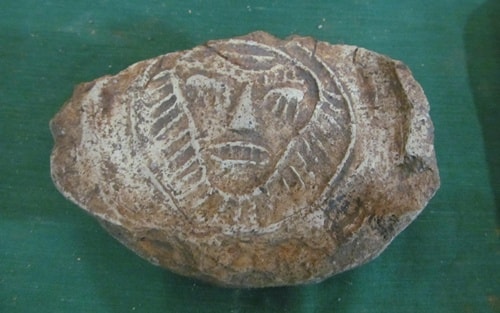Revealing the scope and structure of the Luy Lau relic site
This morning, the National Museum of History held a conference to report the results of international academic research on the Luy Lau relic.
This is a program under the Vietnam-Japan archaeological research cooperation project for the period 2014-2019. At the conference, delegates all affirmed that the Luy Lau relic was the headquarters of Giao Chi district during the Han Dynasty. About 2000 years ago, this place was a political, economic and cultural center of the Linh Nam-North Vietnam region.
The research results have initially determined the location and scope of the Luy Lau relic citadel to the East and South (not to the West near Si Nhiep temple as before), confirming that Luy Lau ancient citadel is located in Thanh Khuong commune, Thuan Thanh district, Bac Ninh province, on the right bank of the ancient Dau river.
 |
The excavation team also found a layer of wall from the Eastern Han Dynasty (around the 2nd-3rd century AD), found traces of the northern wall and the northern gate of the Inner Citadel. This is also the first time the research team has found a large number of Dong Son bronze drum molds in a stable stratum, proving the indigenous nature of Dong Son drums as well as helping us to better visualize the bronze drum casting process.
In addition, the results of excavations in this year's exploration pits revealed a large number of bricks and tiles along with bronze artifacts, indicating that there was metal production activity in the Luy Lau area. Bricks found in the Inner Citadel and bricks found in the tomb area east of the citadel have similarities in decorative patterns.
Some of the patterns on the bricks also bear elements of the Dong Son culture, such as concentric circles and tangent circles. Ms. Hoang Hieu Phan, Head of the research team, said: “In this excavation, our greatest success is in clarifying the scope, internal structure as well as the construction date of the inner city.
We found out that the inner city was built during the Han Dynasty, and was continuously renovated in the following periods. We also saw the formation of the Giao Chi army and the formation of a military regime in this area. The greatest value is that we saw the integration of Han culture - that is, foreign culture - with the local culture - Dong Son culture."
In the coming years, the research team will continue to excavate with the hope of clarifying the appearance of the Luy Lau relic site, assessing the significance of the headquarters of Giao Chi district in the early AD period, and will organize a number of international conferences to announce research results in Vietnam and Japan./.
According to VOV.VN






